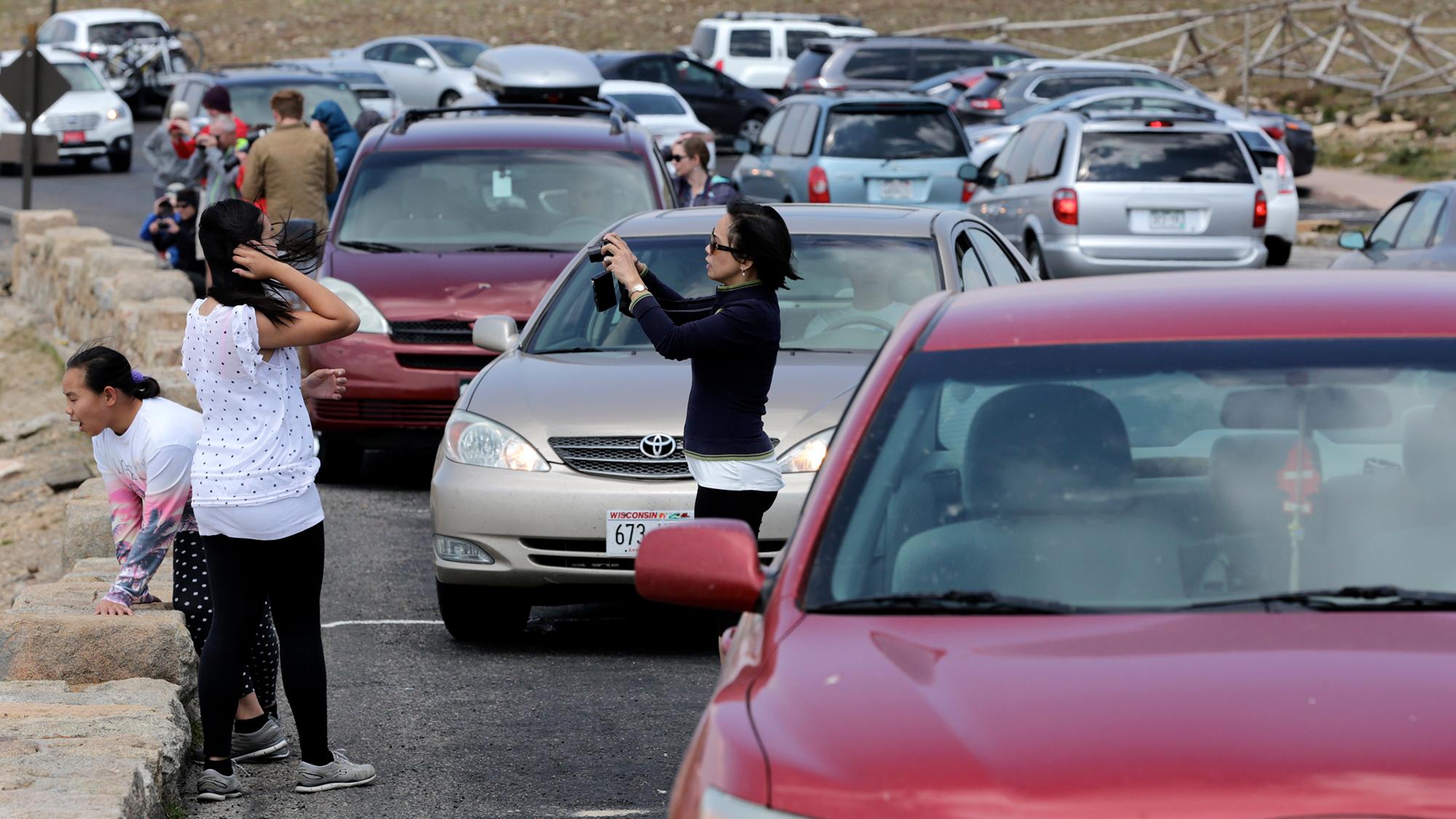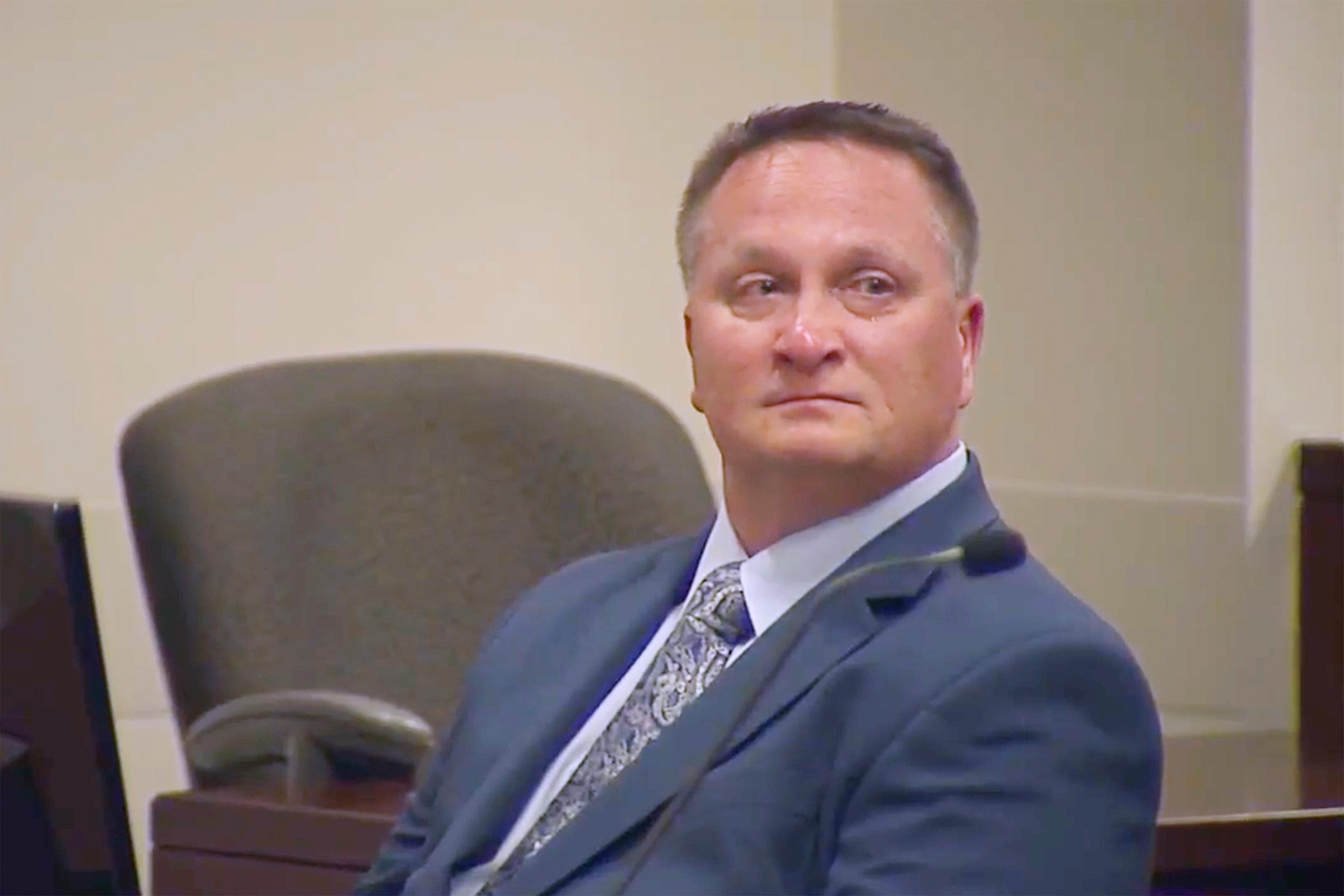

Visitors appear to be steering clear of some U.S. national parks or cutting visits short because of pollution levels that are comparable to what's found in major cities, according to a study released Wednesday.
Researchers at Iowa State and Cornell universities looked at more than two decades of data on ozone pollution at 33 parks — from Shenandoah to Yellowstone, the Grand Canyon and Yosemite. They say visitor numbers dropped almost 2 percent when ozone levels went up even slightly and by at least 8 percent in months with three or more days of high ozone levels compared with months with fewer days of high ozone.
- Noise Pollution: How CSU Students Fight The Racket In National Parks
Study co-author Ivan Rudik said air quality warnings issued by parks and other government agencies may be causing the visitation drop. That's consistent with previous research on so-called avoidance behavior in response to pollution alerts in other settings.
The study sought to control for seasonal variations and daily changes in the weather.
"Even though the national parks are supposed to be icons of a pristine landscape, quite a lot of people are being exposed to ozone levels that could be detrimental to their health," said Rudik, an assistant professor of economics at Cornell.
The study was published in the journal Science Advances. It comes as national parks have seen record numbers of visitors in recent years despite any concerns over pollution.
Ozone, the main ingredient in smog, is formed when small particles of pollution from cars, power plants and industrial facilities react with sunlight. It limits visibility and can cause respiratory problems.
In parks, ozone is carried in on the wind and also caused by traffic and other activities.
Data collected by the National Park Service show parks failed to meet U.S. air quality standards for ozone at least 85 times this year. In 2016, national parks exceeded the standard a combined 276 times.
East side #RMNP entrances continue to be backed up. If you're interested in the Bear Lake Corridor, take the shuttle from the Estes Park Visitor Center. ks pic.twitter.com/X9TJXPm1SN
The National Park Service was reviewing the study but hasn't evaluated whether ozone and visitation are linked, spokesman Jeffrey Olson said. He said nine parks issue ozone alerts when warranted — Acadia, Great Smoky Mountains, Mammoth Cave, Pinnacles, Rocky Mountain, Sequoia, Kings Canyon, Shenandoah and Yosemite.
Virginia Tech economist Kevin Boyle, who has researched ozone in parks and was a peer reviewer for the study, said it provides "strong, suggestive evidence" that air pollution is changing people's behavior when planning a park visit. Boyle said follow-up research is needed to confirm the findings.
Tourists also cut visits short for other air quality problems, such as thick smoke from wildfires that was blanketing Yosemite National Park this week and led to health warnings.
Ozone concentrations nationwide have generally fallen since the Clean Air Act was amended in 1990 to address the problem, according to the U.S. Environmental Protection Agency.
Yet amounts still regularly exceed national guidelines, and the researchers determined that many national parks have pollution levels similar to New York or Los Angeles.
- Not A New Problem: Feds, Colorado In Tug Of War Over Wilderness Air Quality
A comparison of ozone in parks to levels in the 20 most populous U.S. cities showed they were “statistically indistinguishable,” according to the study.
At Sequoia National Park, about 200 miles north of Los Angeles, there have been more bad ozone days than in the city in all but two years since 1996, the study said.
Park visitors who live nearby are more likely to change their plans than out-of-town visitors who have sunk money into airplane tickets, lodging and rental cars, said John Loomis, an economics professor at Colorado State University who was not involved in the study.
Studies of air quality alerts and the reactions they trigger among schoolchildren in England and children and the elderly in Los Angeles have reached similar conclusions.
“You basically shift what you do” to avoid pollution, Loomis said.









